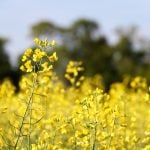Anew broad-spectrum fungicide with two Group 3 actives against leaf and head disease in wheat and barley is billed as the “most effective” fungicide to suppress fusarium head blight. Bayer CropScience Canada has announced registration in Western Canada for its tebuconazole and prothioconazole product, Prosaro, to be available at participating ag retailers for the 2011



